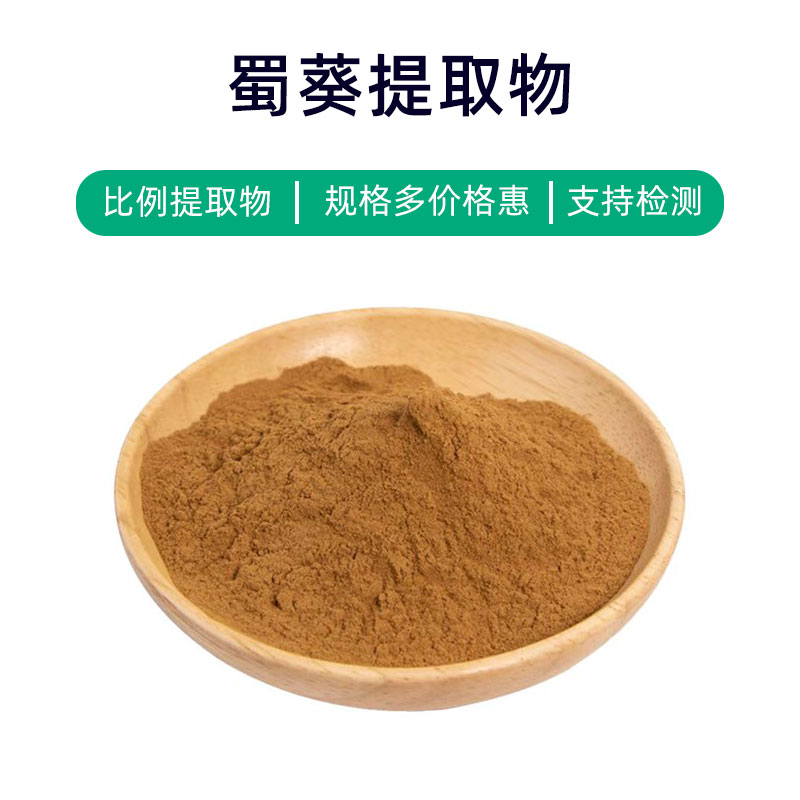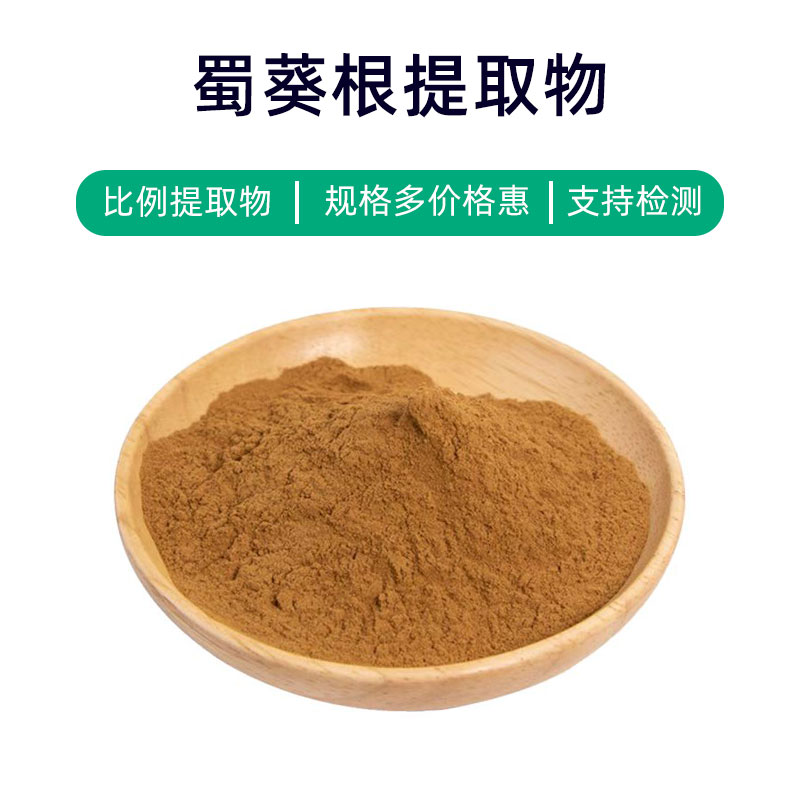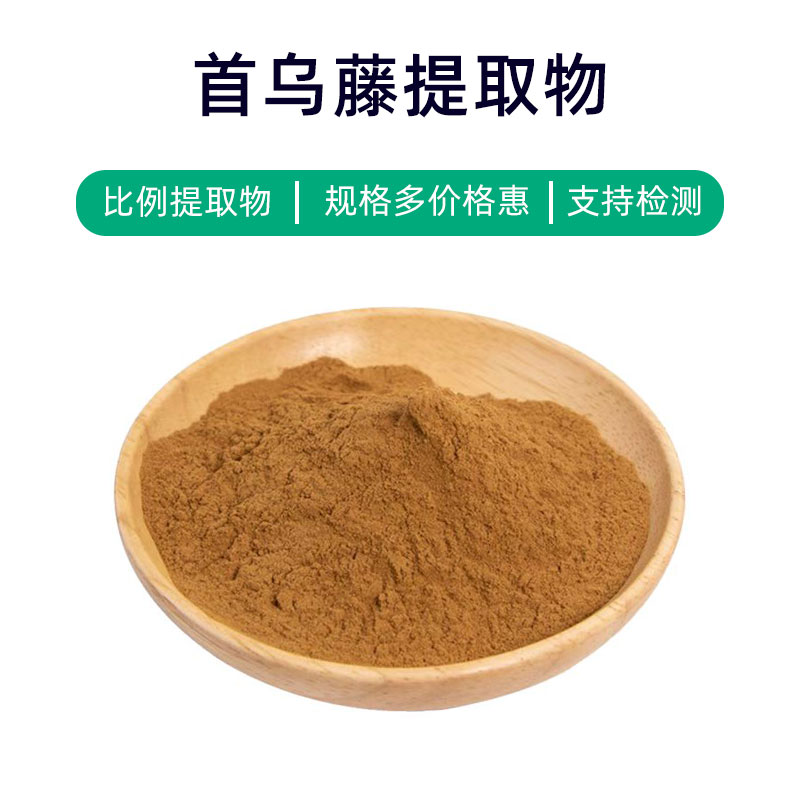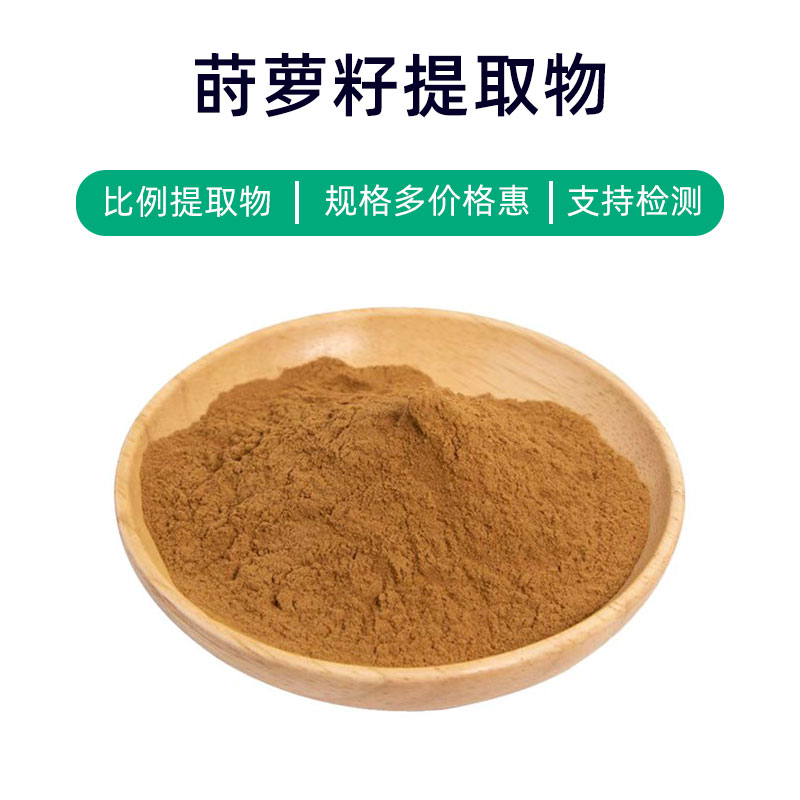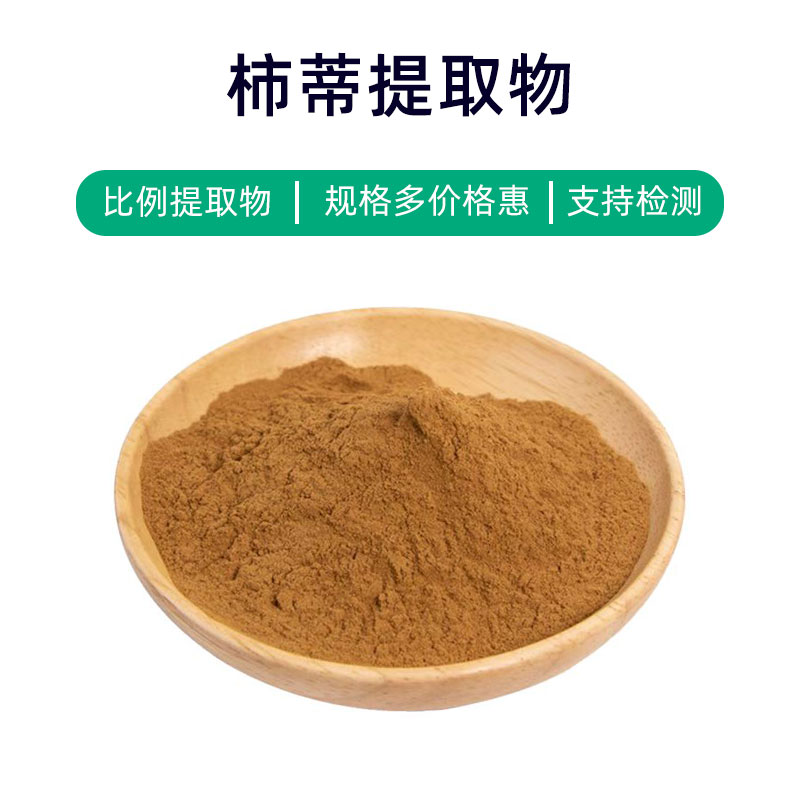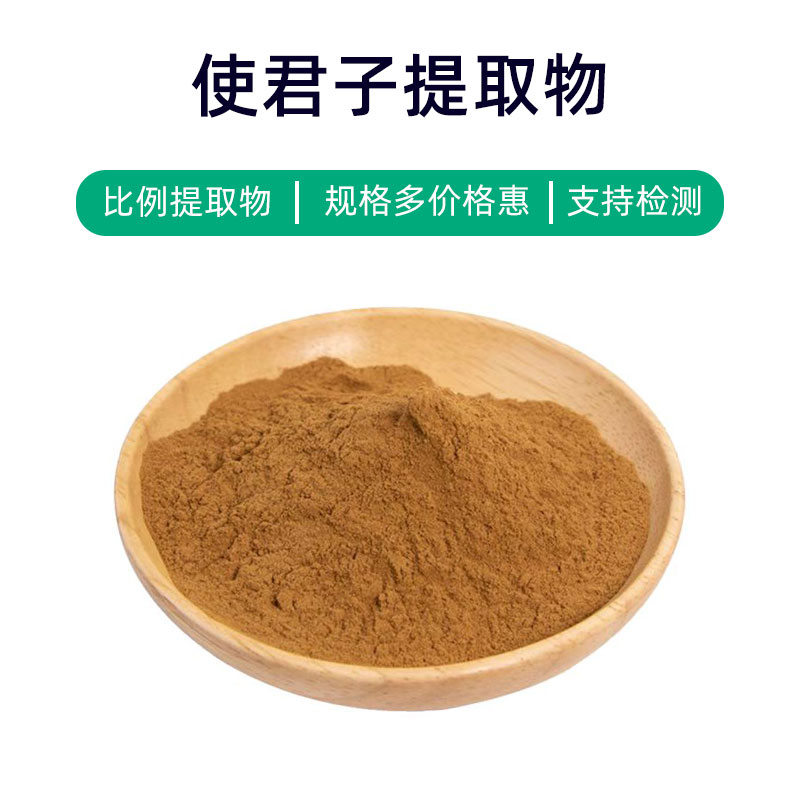Honeysuckle Extract Product Introduction
Honeysuckle extract is a natural plant extract obtained from the flowers of the honeysuckle plant, which belongs to the Caprifoliaceae family. Its major components include rosmarinic acid, anthocyanins, and essential oils. Honeysuckle extract is widely used in medicine, health supplements, and cosmetics. It is commonly found in skincare products and cosmetics, providing antibacterial, anti-inflammatory, and antioxidant benefits, aiding in skin health and delaying aging. Additionally, honeysuckle extract can be used as a food additive to enhance flavor and aroma, and it has certain preservative properties. In medicine, it is also used to prepare traditional Chinese medicine and health products to assist in treating symptoms such as colds and fevers. Overall, honeysuckle extract is a natural plant extract with multiple benefits, widely applied across various fields.
Honeysuckle Extract Production Process
The production process of honeysuckle extract typically includes the following main steps:
- Raw Material Preparation: Select fresh honeysuckle flowers as extraction material, ensuring quality and purity.
- Preliminary Processing: Conduct initial processing on the harvested honeysuckle flowers, including washing, removing impurities, and moisture.
- Extraction Process: Use appropriate extraction methods such as water extraction, ethanol extraction, or supercritical CO2 extraction to obtain the active components from the honeysuckle.
- Concentration and Purification: Concentrate the extracted mixture to remove solvents and impurities, resulting in concentrated honeysuckle extract.
- Filtration and Purification: Filter and purify the concentrated extract to eliminate residual solid particles and impurities, ensuring the purity and quality of the extract.
- Drying and Forming: Dry the purified honeysuckle extract to remove moisture, forming it into powder, granules, or liquid forms for subsequent packaging and storage.
- Quality Control: Throughout the production process, strict quality control is necessary, monitoring key parameters at each step to ensure the product meets relevant quality standards and regulations.
- Packaging and Storage: Finally, package and label the produced honeysuckle extract, storing it in a dry, cool, and ventilated environment to maintain stability and long shelf life.
Through this production process, high-quality, stable-purity honeysuckle extract can be produced to meet the demands of various industries.
Honeysuckle Extract Efficacy and Side Effects
Honeysuckle extract is a commonly used herbal material, possessing a variety of effects and benefits, mainly including the following aspects:
- Anti-Inflammatory Effects: Honeysuckle extract contains rich bioactive components with significant anti-inflammatory properties, effectively alleviating inflammation, pain, and swelling.
- Antibacterial and Anti-Inflammatory: The active components in honeysuckle extract exhibit broad-spectrum antibacterial properties, inhibiting the growth of bacteria, viruses, and fungi, aiding in the treatment of infectious diseases.
- Immune Regulation: Honeysuckle extract can regulate immune function, enhance resistance, and increase the activity of immune cells, helping to prevent and treat immune system-related diseases.
- Antioxidant: Honeysuckle extract is rich in antioxidants, which can eliminate free radicals in the body, reduce oxidative damage, slow aging, and protect cell health.
- Lipid-Lowering: Honeysuckle extract has lipid-regulating effects, lowering cholesterol and triglyceride levels in the blood, and preventing cardiovascular diseases.
- Anti-Tumor: Studies have shown that the active components in honeysuckle extract possess anti-tumor effects, inhibiting the growth and spread of tumor cells, with certain therapeutic effects on specific tumors.
- Liver Protection: Honeysuckle extract has protective effects on the liver, alleviating liver damage, promoting the repair and regeneration of liver cells, and having certain effects in preventing and treating liver diseases.
- Blood Sugar Regulation: Honeysuckle extract can lower blood sugar levels and increase insulin sensitivity, aiding in blood sugar control and preventing and treating diabetes.
Although honeysuckle extract has multiple benefits and effects, there are some side effects and considerations during use. Long-term or excessive use may lead to digestive discomfort, allergic reactions, and other adverse effects. Therefore, it is recommended to follow medical advice and use appropriate dosages and methods when using honeysuckle extract to avoid adverse reactions.
Honeysuckle Extract Application Scenarios and Dosage
Honeysuckle extract is widely applied in the fields of medicine, food, and cosmetics, with the following main methods and dosages:
- Applications in Medicine:
- Oral Solution: Generally recommended for adults to take 10-20 milliliters at a time, 2-3 times daily; children's dosage should be adjusted accordingly.
- Granule Form: Adults should take 5-10 grams at a time, 2-3 times daily, with children's dosage adjusted accordingly.
- Injectables: Doses and frequency are determined by physicians based on the patient's specific condition and health status.
- Applications in Food:
- Health Supplements: Honeysuckle extract can be processed into capsules, tablets, or oral liquids, taken according to the dosage recommended in product instructions.
- Functional Foods: Added to beverages, dairy products, pastries, and other foods, providing antioxidant and immune-regulating functions.
- Applications in Cosmetics:
- Skincare Products: Honeysuckle extract is commonly used in skincare formulations, offering soothing, moisturizing, and antioxidant properties. It can be included in creams, lotions, and serums, following product instructions for use.
- Washing and Care Products: Shampoos and body washes with honeysuckle extract provide cleaning and moisturizing benefits for hair and skin.
When using honeysuckle extract, please follow the specific product instructions or your doctor's recommendations, adhering to the following principles:
- Strictly control dosages to avoid adverse reactions from excessive use.
- Be mindful of storage methods and expiration dates to avoid using expired or low-quality products.
- For special populations such as children, pregnant women, and the elderly, consult with a physician before use.
- If any discomfort or allergic reactions occur, discontinue use immediately and consult a doctor.
Honeysuckle Extract Source Plant Overview, Distribution, and Growth Environment
Honeysuckle, scientifically known as Lonicera japonica, is a common medicinal and ornamental plant with a wide distribution and cultivation areas. Here is detailed information regarding the source plant of honeysuckle extract, its distribution, and growth environment:
- Plant Overview:
- Chinese Name: 山银花
- Latin Name: Lonicera japonica Thunb.
- English Name: Japanese Honeysuckle
- Family: Caprifoliaceae
- Plant Characteristics: Honeysuckle is a perennial or semi-perennial climbing shrub with twisted branches. Leaves are opposite, ovate or lanceolate, with a leathery texture and deep green color. Flowers are funnel-shaped, white or light yellow, with a sweet aroma.
- Distribution:
- Native Regions: Honeysuckle is native to China and Japan.
- Global Distribution: Due to its medicinal and ornamental value, honeysuckle has been widely introduced to various parts of the world, including Asia, Europe, North America, and Australia.
- Growth Environment: Honeysuckle thrives in sunny and humid environments, is not very strict about soil conditions, but prefers loose, fertile sandy loam.
- Growth Environment:
- Climate Requirements: Honeysuckle is highly adaptable and can thrive in warm, humid climates.
- Light Requirements: Prefers ample sunlight but can also grow in semi-shade or partially shaded conditions.
- Soil Requirements: Adaptable to various soil types, but grows best in well-drained, fertile, loose soil, ideally with a pH of 6.0-7.5.
Overall, honeysuckle is a highly adaptable plant with a broad growth environment, widely distributed around the world, commonly found in fields, forests, and gardens. Its significant medicinal and ornamental values make it a popular plant.
Honeysuckle Extract Processing and Storage
The processing and storage of honeysuckle extract are crucial steps to ensure its quality and effectiveness:
- Processing Steps: The processing of honeysuckle extract typically involves harvesting, washing, grinding, steeping, filtering, concentrating, and drying. During the steeping process, temperature, time, and solvent selection can significantly impact the quality of the extract.
- Storage: Honeysuckle extract should be stored in a dry, cool, and ventilated area, away from direct sunlight and high temperatures. The extract should be sealed to prevent moisture and dust contamination. It should also be kept away from harmful gases and odoriferous substances to maintain its stability and purity.
- Shelf Life: Under appropriate storage conditions, honeysuckle extract generally has a long shelf life, but it is recommended to use it within a certain timeframe after the production date to ensure optimal effectiveness and quality.
- Precautions: During storage and use, attention should be paid to preventing moisture, dust, and insects, with regular checks on the extract's appearance and smell. Any abnormal changes should prompt timely handling or disposal to ensure the product's safety and effectiveness.
Monica Sun is a seasoned expert in the plant extraction industry with over a decade of experience in research and production. She specializes in the extraction and purification of plant active ingredients, focusing on driving innovation in natural product applications. Monica has participated in the development of multiple functional plant extracts, delivering high-value natural raw material solutions for the health food, pharmaceutical, and dietary supplement sectors.









